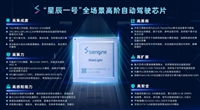| 型号 | 品牌 | 获取价格 | 描述 | 数据表 |
| ADP165ACPZN-3.0-R7 | ADI |
获取价格 |
Very Low Quiescent Current, 150 mA, with Output Discharge LDO Regulator |

|
| ADP165ACPZN-3.3-R7 | ADI |
获取价格 |
Very Low Quiescent Current, 150 mA, with Output Discharge LDO Regulator |

|
| ADP165ACPZN-R7 | ADI |
获取价格 |
Very Low Quiescent Current, 150 mA, with Output Discharge LDO Regulator |

|
| ADP165AUJZ-1.2-R7 | ADI |
获取价格 |
Very Low Quiescent Current, 150 mA, with Output Discharge LDO Regulator |

|
| ADP165AUJZ-2.3-R7 | ADI |
获取价格 |
Very Low Quiescent Current, 150 mA, with Output Discharge LDO Regulator |

|
| ADP165AUJZ-3.0-R7 | ADI |
获取价格 |
Very Low Quiescent Current, 150 mA, with Output Discharge LDO Regulator |

|
| ADP165AUJZ-3.3-R7 | ADI |
获取价格 |
Very Low Quiescent Current, 150 mA, with Output Discharge LDO Regulator |

|
| ADP165AUJZ-R7 | ADI |
获取价格 |
Very Low Quiescent Current, 150 mA, with Output Discharge LDO Regulator |

|
| ADP166 | ADI |
获取价格 |
150 mA 超低静态电流LDO调节器 |

|
| ADP1660 | ADI |
获取价格 |
Dual 750 mA LED Flash Driver with I2C-Compatible Interface |

|
 三星深化印度制造布局,供应链本地化进程加速
三星深化印度制造布局,供应链本地化进程加速

 芯擎科技“星辰一号”自动驾驶芯片点亮成功,2025年量产在即
芯擎科技“星辰一号”自动驾驶芯片点亮成功,2025年量产在即

 纳微科技震撼发布GaNSlim革新氮化镓功率芯片
纳微科技震撼发布GaNSlim革新氮化镓功率芯片

 意法半导体发布第四代SiC技术,助力电动汽车电驱
意法半导体发布第四代SiC技术,助力电动汽车电驱
